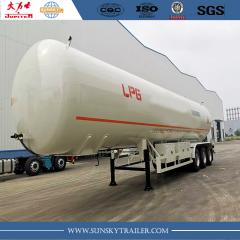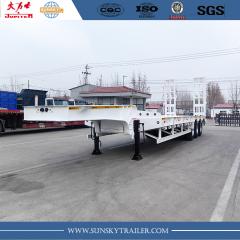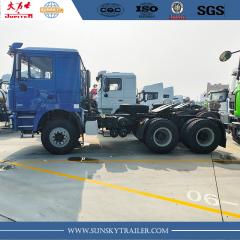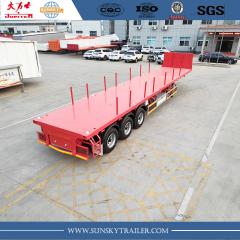-
 3 Axle Lpg Gas Tank Semi Trailer
3 Axle Lpg Gas Tank Semi Trailer
-
 Low Bed Trailer
Low Bed Trailer
-
 SHACMAN F3000 Tractor Truck
SHACMAN F3000 Tractor Truck
-
 Flatbed Pillar Trailer
Flatbed Pillar Trailer
SUNSKY VEHICLE, a manufacturer of flatbed semi-trailers, has found that the Flatbed Pillar Trailer i...
For drivers who are engaged in flatbed transportation, whether you are a novice or to expand your flatbed truck needs, you need to know "what is flatbed transportation?". Flatbed trucking can be broadly defined as the open transportation of oversized cargo. Instead of being enclosed in a trailer, cargo is loaded and hauled on a flat platform with no walls.At the same time, flatbed trucks are also a huge investment for drivers. Therefore, before we buy a flatbed truck, we need to know what the flatbed truck can transport?
The most common freight uses for flatbed trucks include:
-Heavy machinery and equipment used by industrial, agricultural, construction, warehousing and manufacturing companies
-Miscellaneous building materials, including formed concrete, timber, building materials, girders or trusses
-power transformer
-Commercial units including heaters and air conditioners
-Scrap metal and other items requiring removal or disposal
-Cargo and cars and other vehicles that exceed 102 inches in height or 102 inches in width.
Other heavy goods that need to be loaded from the top or side of the vehicle
Before purchasing a flatbed, attention to the following details is critical to ensuring a successful purchase:
Purpose and Requirements: Determine the specific purpose of the flatbed truck and determine your requirements. Consider factors such as maximum payload capacity, bed length and width, towing capacity, and any specific features or configurations needed to meet your hauling needs.
New or Used: Decide whether you want to buy a new or used flatbed truck. Evaluate the pros and cons of each option, including cost, warranty, maintenance history, and overall condition. Consider your budget and the intended use of the truck to make an informed decision.
Vehicle History and Inspection: If considering a used flatbed truck, thoroughly inspect the vehicle's history and condition. Request maintenance records, vehicle history reports, and consider hiring a professional mechanic or inspector to evaluate the truck's mechanical components, frame, suspension, brakes, and other critical areas. Look for any signs of wear, damage or potential problems that could affect its performance or safety.
Manufacturer and Reputation: Research different manufacturers and choose a reputable and reliable brand known for producing high-quality flatbed trucks. Check out reviews, customer feedback and ratings to gauge the reputation and reliability of the manufacturer and the specific model you're interested in.
Payload and Weight Capacity: Make sure the flatbed truck has enough payload and capacity to handle the load you plan to haul. Consider factors such as Gross Vehicle Weight Rating (GVWR), axle ratings, and any legal limits imposed by local regulations.
Engine and Powertrain: Evaluate truck engine and powertrain performance and power. Consider factors such as horsepower.
No matter what type of cargo you wish to transport on a flatbed, knowing the basics you need is half the battle. If you want to start your flatbed truck or expand your business, you can partner with a professional vehicle company who knows how to expand your business.
Are you interested in learning more about flatbed shipping services for your business? Contact sunskytrailer immediately!




